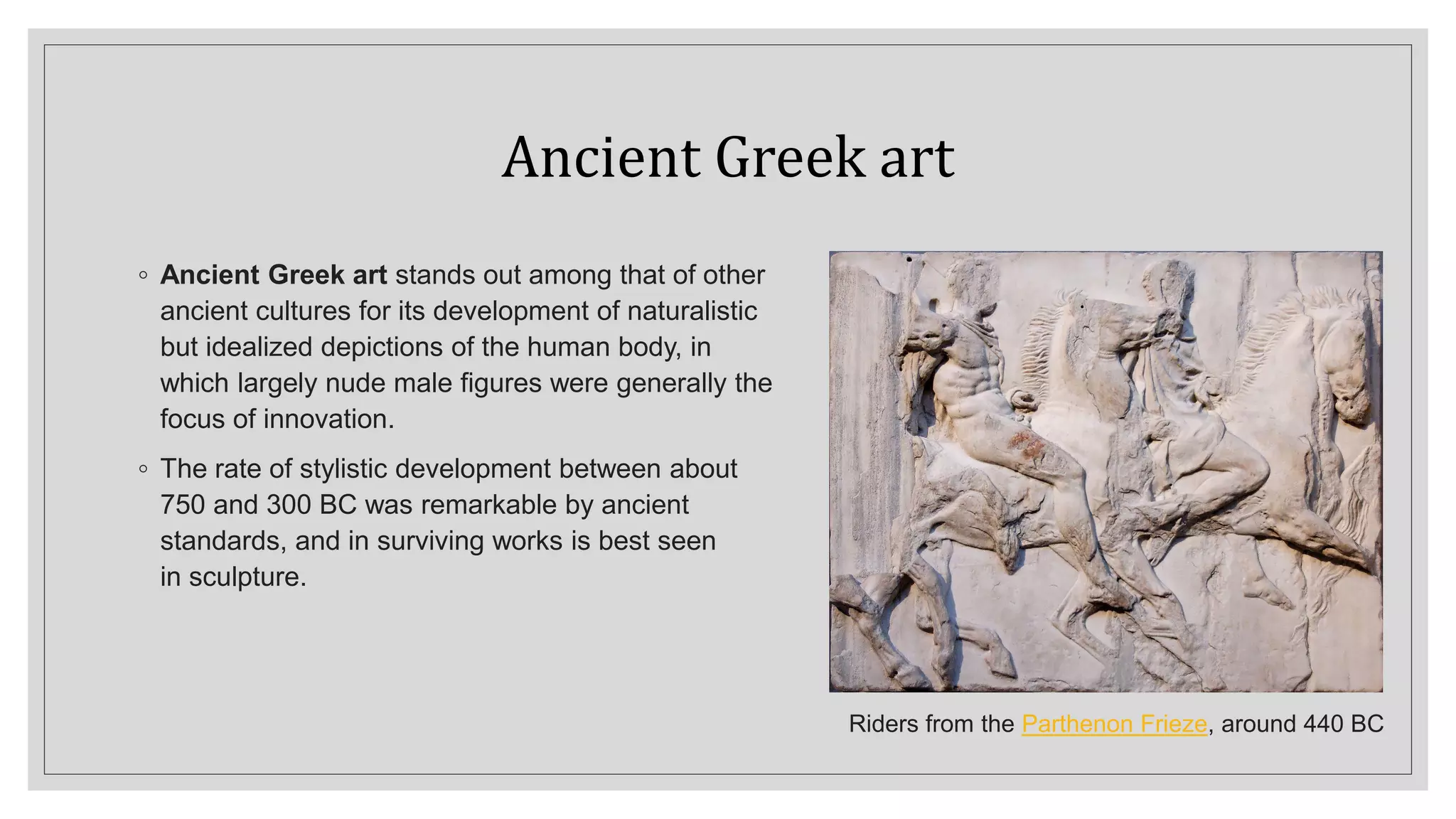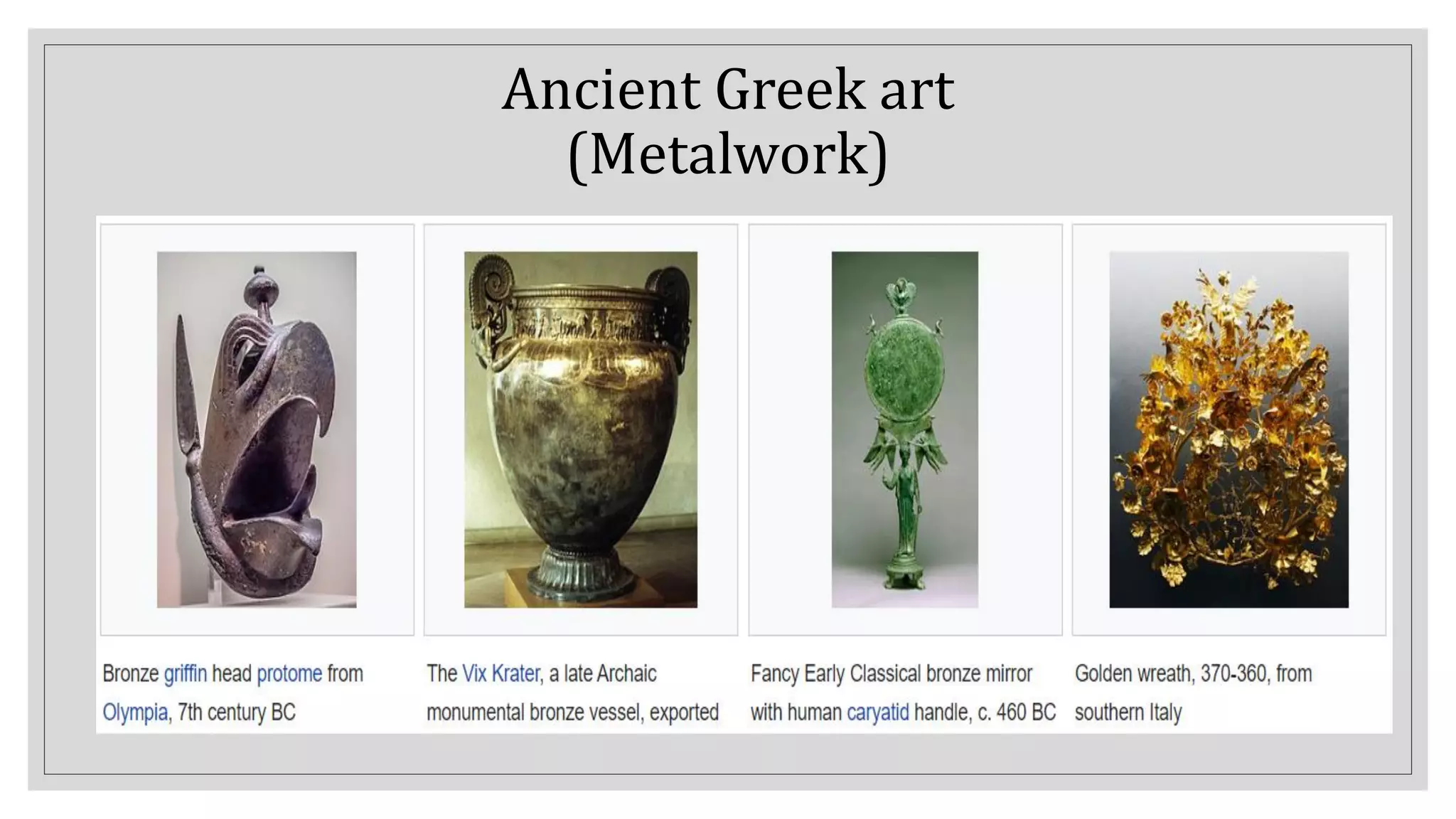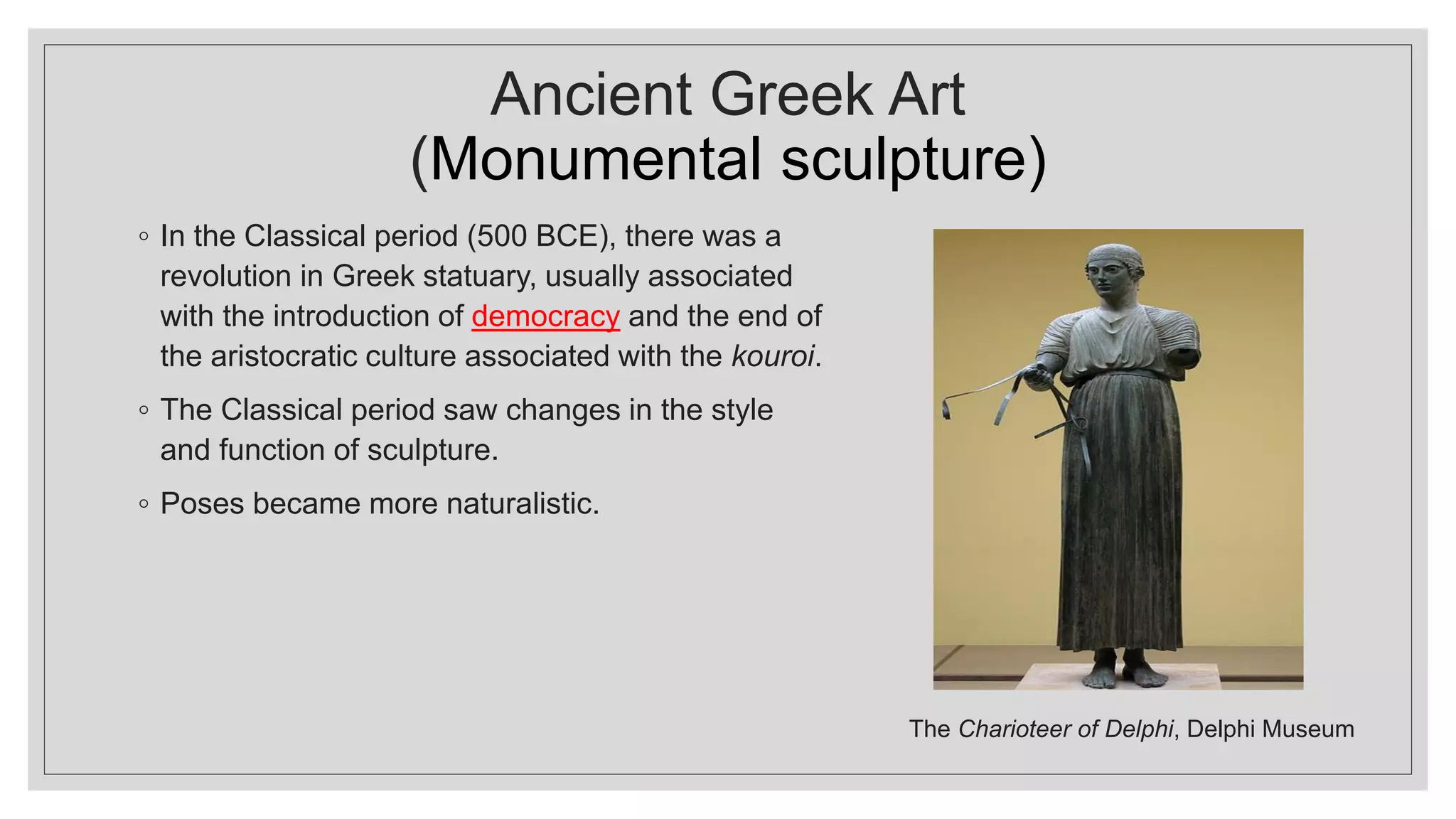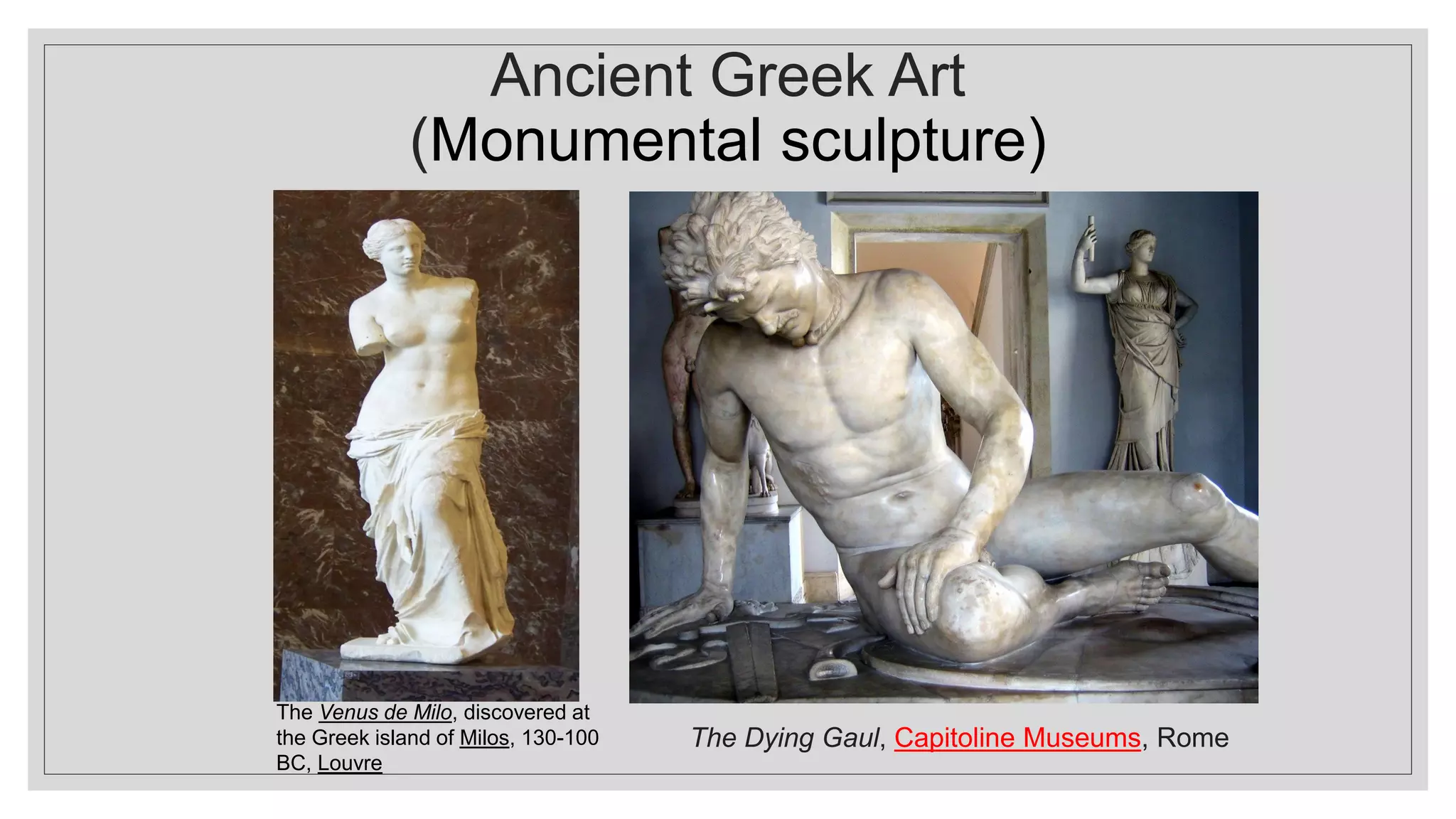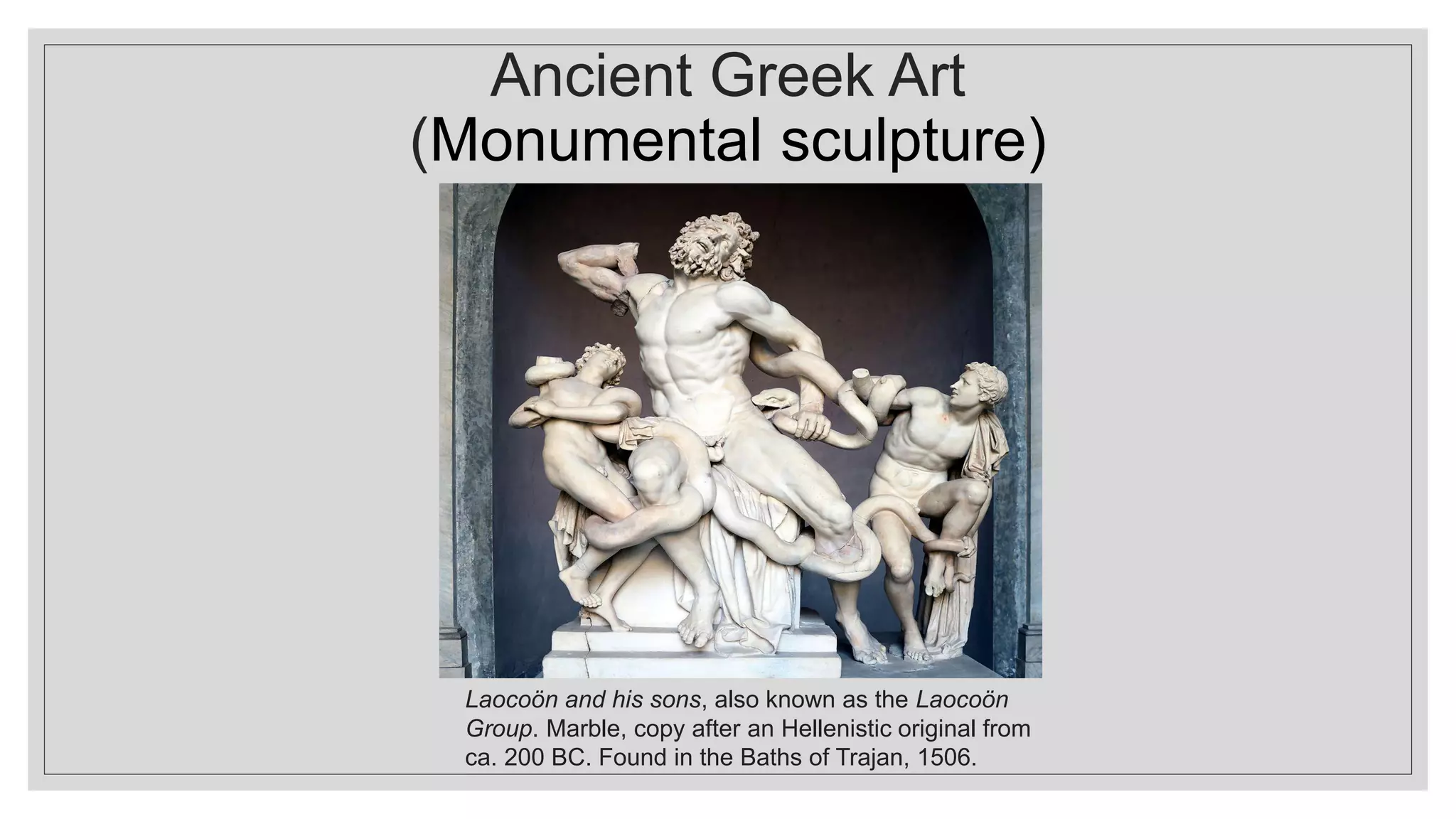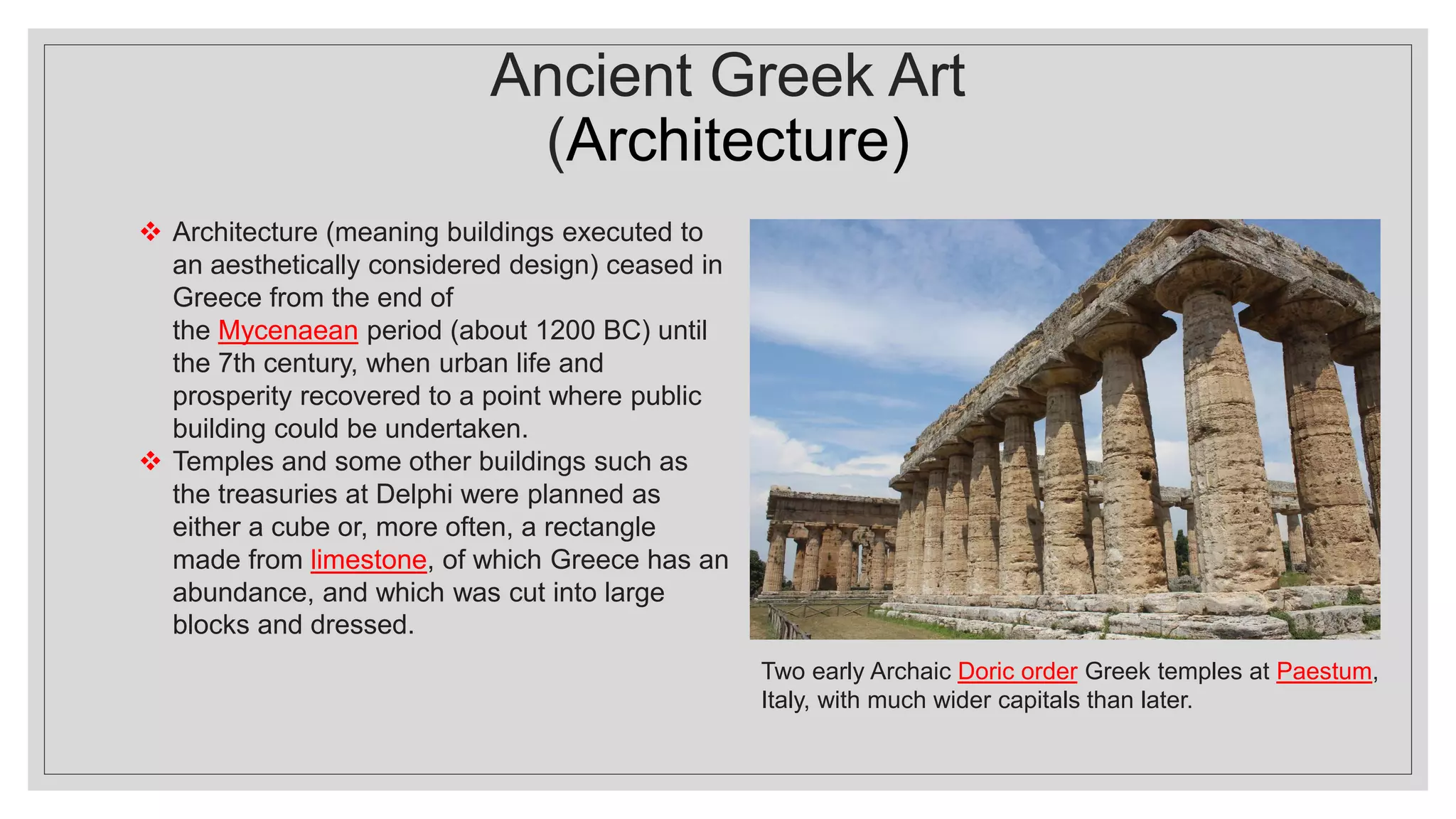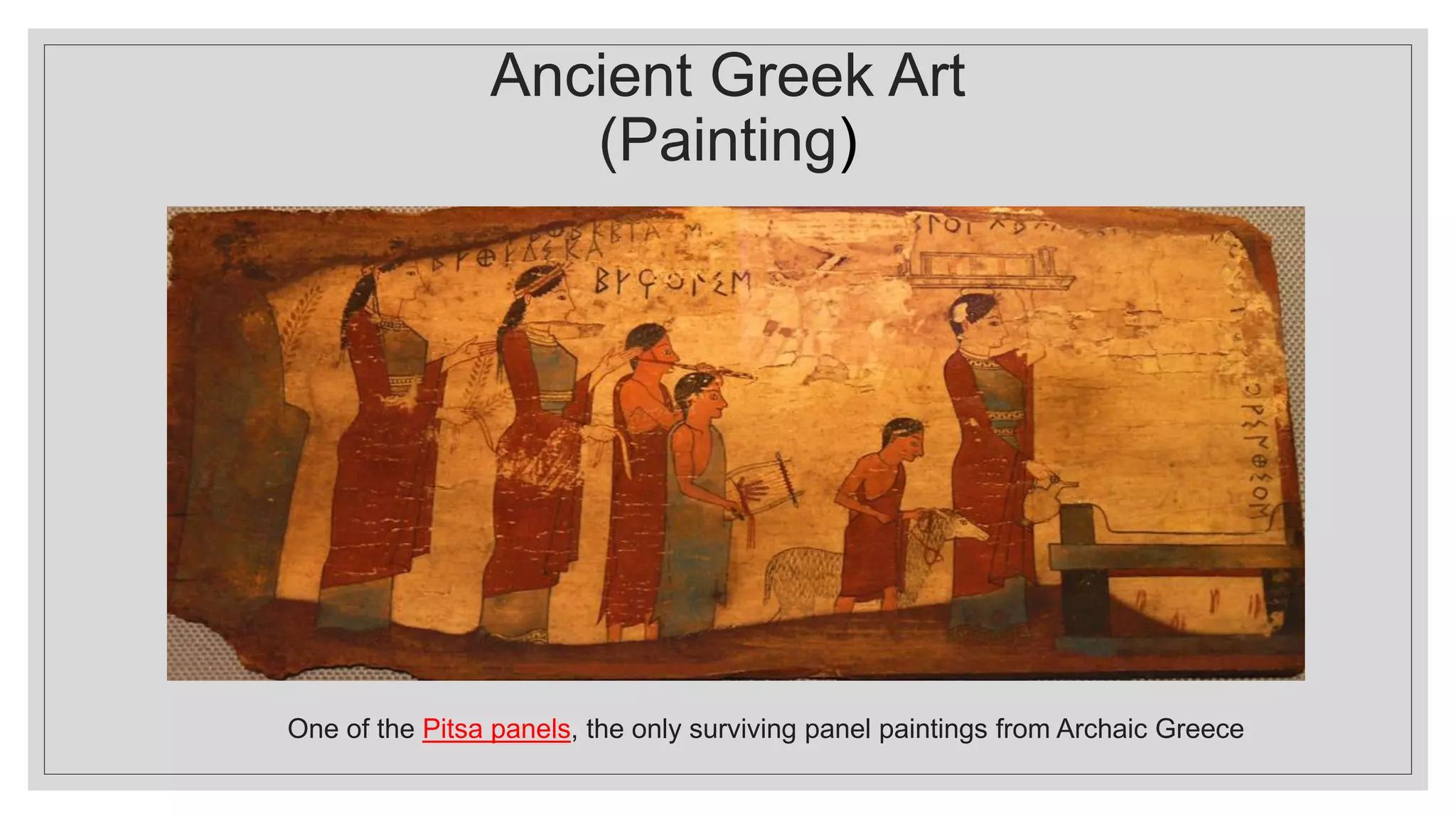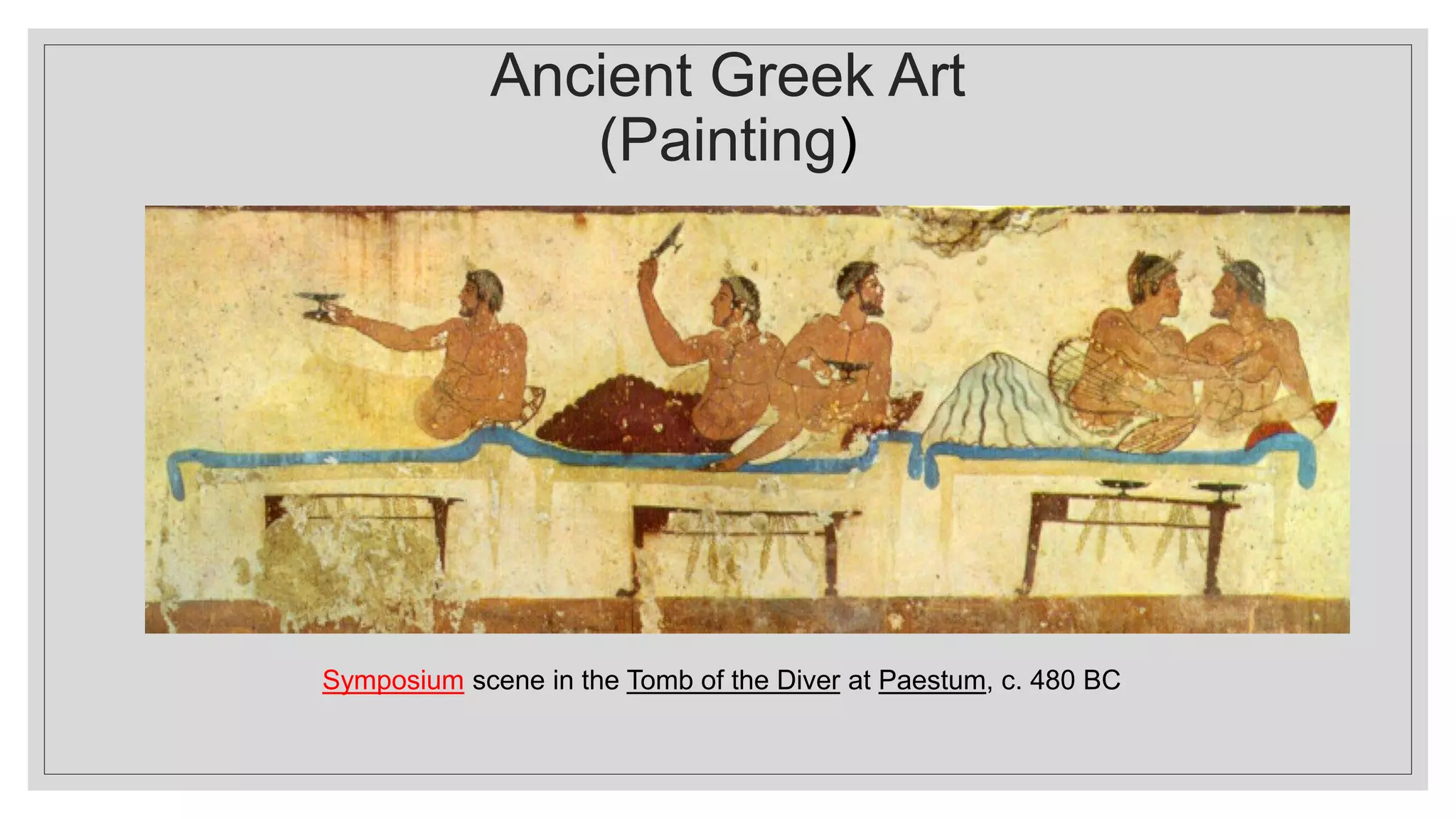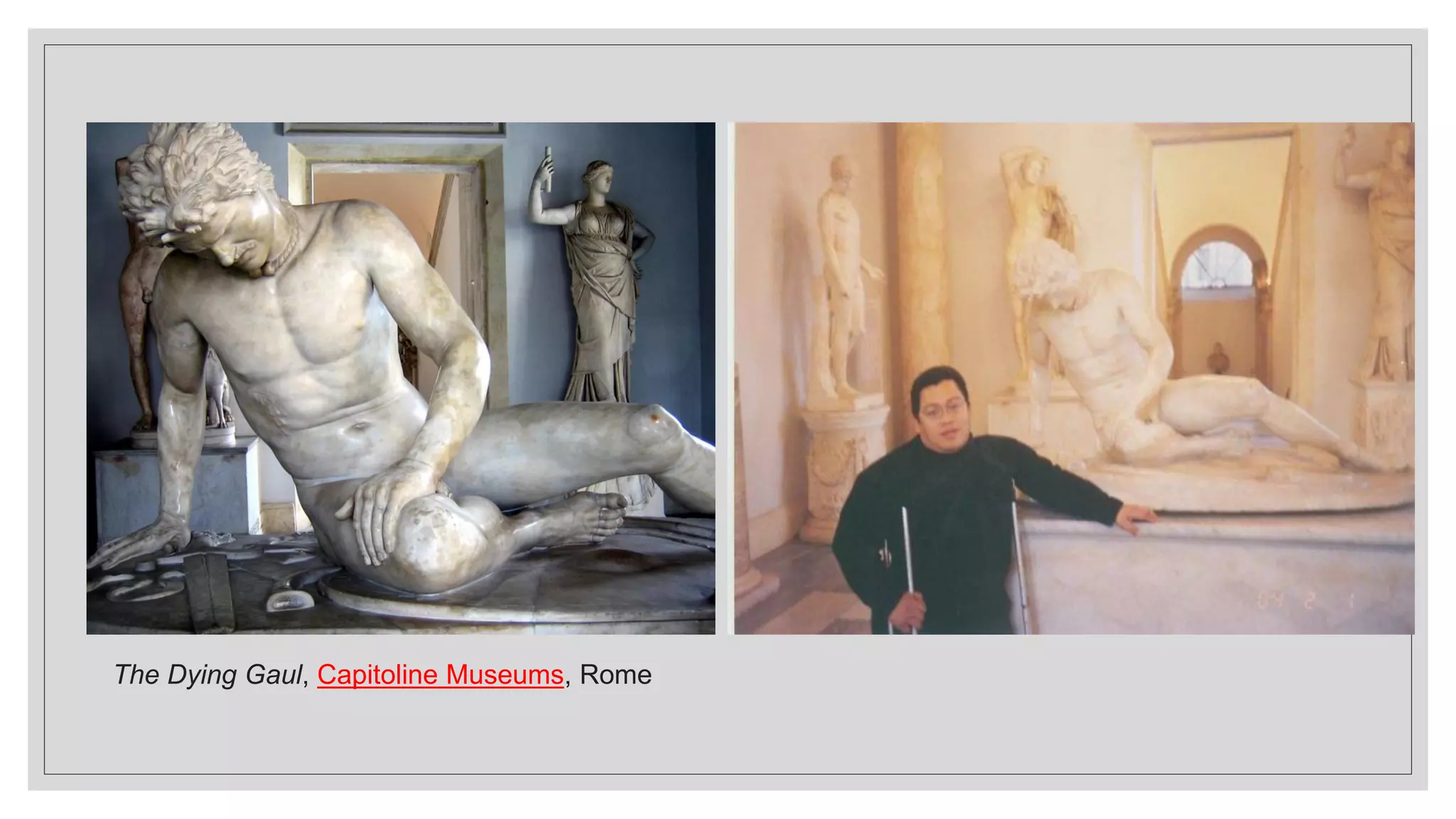Ancient Greek art developed naturalistic depictions of the human body that focused on nude male figures. Stylistic development between 750-300 BC was remarkable by ancient standards, especially seen through surviving sculptures. Important innovations also occurred in painting, though few originals survive apart from painted pottery. Greek architecture established harmonious styles using simple techniques that influenced later Roman and modern buildings. Pottery progressed through Geometric, Orientalizing, Black Figure, Red Figure, and White Ground styles, often depicting myths and daily life. Monumental sculpture also advanced from early kouros to naturalistic Classical and emotional Hellenistic works.

